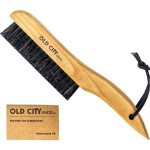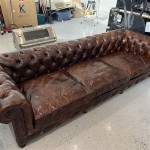How To Recover a Sofa
Reupholstering a sofa can seem daunting, but with careful planning and execution, it can be a rewarding project. This comprehensive guide outlines the necessary steps to successfully recover a sofa, transforming a tired piece of furniture into a revitalized centerpiece.
Assessment and Planning: Begin by thoroughly assessing the sofa's condition. Check the frame for stability and any necessary repairs. Examine the existing upholstery for damage and determine the extent of the required fabric replacement. Accurately measuring the sofa is crucial for calculating the amount of new fabric needed. Consider the complexity of the sofa's design; intricate details like tufting or curved arms will require more advanced skills and time.
Gathering Materials: Selecting the right fabric is paramount. Consider durability, color, pattern, and texture to complement the room's décor and withstand daily use. Measure the sofa carefully and add extra yardage to account for pattern matching and potential mistakes. In addition to fabric, gather essential tools and supplies. These typically include upholstery tacks or staples, a heavy-duty staple gun, pliers, a seam ripper, scissors, measuring tape, a utility knife, and a screwdriver.
Disassembly: Carefully document the disassembly process. Photographs and labeled bags for hardware will significantly aid reassembly. Start by removing the existing upholstery, taking care not to damage the underlying padding or frame. This process typically involves removing staples or tacks and carefully peeling back the fabric layers. Examine the existing padding and springs; replace or repair any damaged sections. New padding can significantly enhance the sofa's comfort.
Pattern Creation: Use the removed fabric pieces as templates for cutting the new fabric. Lay the old fabric pieces on the new fabric, ensuring proper alignment with the pattern, if applicable. Trace around the old pieces, adding a seam allowance of approximately one inch. Mark any notches or specific details from the original fabric onto the new pieces. This meticulous pattern creation process ensures a proper fit for the new upholstery.
Cutting and Sewing: Using sharp scissors, cut the new fabric pieces following the traced lines. Pin the corresponding fabric pieces together, aligning the edges and matching any patterns. Sew the pieces together using a sewing machine and a strong thread suitable for upholstery. Reinforce seams in high-stress areas to prevent future tearing. Ensure all seams are straight and secure.
Attaching the New Upholstery: Begin by centering the new fabric on the corresponding sofa section. Secure the fabric to the frame using upholstery tacks or staples, starting in the center and working outwards. Smooth the fabric taut to eliminate wrinkles or puckers. For complex shapes, carefully manipulate the fabric to conform to the contours of the sofa. Trim any excess fabric as needed.
Reassembly: Refer to the documentation created during disassembly to reassemble the sofa. Attach any previously removed components, such as legs, arms, and cushions. Ensure all screws and bolts are tightened securely. Inspect the finished product for any loose threads or uneven areas. Address any imperfections promptly.
Finishing Touches: Once the sofa is fully reassembled, add finishing touches. Replace cushion covers if necessary, ensuring a snug fit. Steam or iron any remaining wrinkles on the upholstery. This final step ensures a polished and professional-looking result.
Upholstery-Specific Considerations: Different types of upholstery require specific techniques. Leather, for instance, requires specialized tools and adhesives. Consider consulting resources specific to the chosen fabric type for optimal results. Delicate fabrics may require professional cleaning only.
Professional Assistance: While recovering a sofa is achievable for dedicated DIY enthusiasts, complex designs or challenging fabrics might necessitate professional assistance. Consulting with a professional upholsterer can provide valuable guidance and ensure a high-quality outcome.
Maintenance and Care: Regular maintenance will prolong the lifespan of the newly upholstered sofa. Vacuum the sofa frequently to remove dust and debris. Address spills promptly to prevent staining. Depending on the fabric type, consider using a fabric protector to safeguard against future damage. Rotating cushions regularly helps maintain even wear.

Do It Yourself Divas Diy Strip Fabric From A Couch And Reupholster

How To Reupholster A Couch Without Removing The Old Fabric Erfly House

How To Reupholster A Couch Without Removing The Old Fabric Erfly House

Recover Your Sofa From Leather To Fabric Stunning Transformation And A Lot Er Than New Rescot Upholstery

While They Snooze How To Reupholster A Tufted Couch

The Art Of Recovering Old Furniture Luz Custom Curtains Upholstery Work New Orleans Louisiana

How To Easily Upholster A Sofa And Paint It Shabbyfufu Com

A New Old Sofa Stagg Design

D I Y E S G N How To Re Upholster Furniture With Wood Parts

Cost To Reupholster A Couch Save By Recovering We Can Fix That
Related Posts








